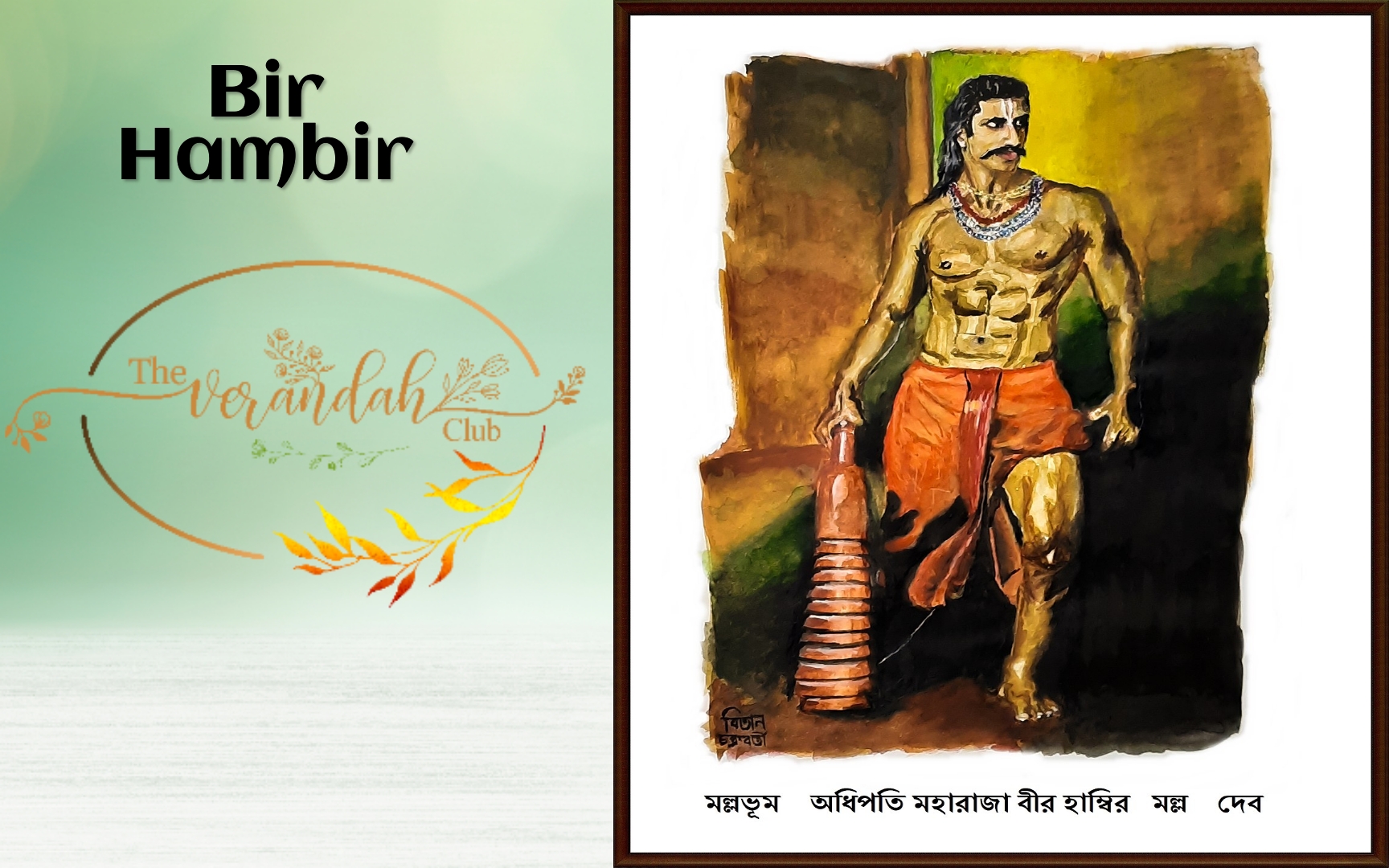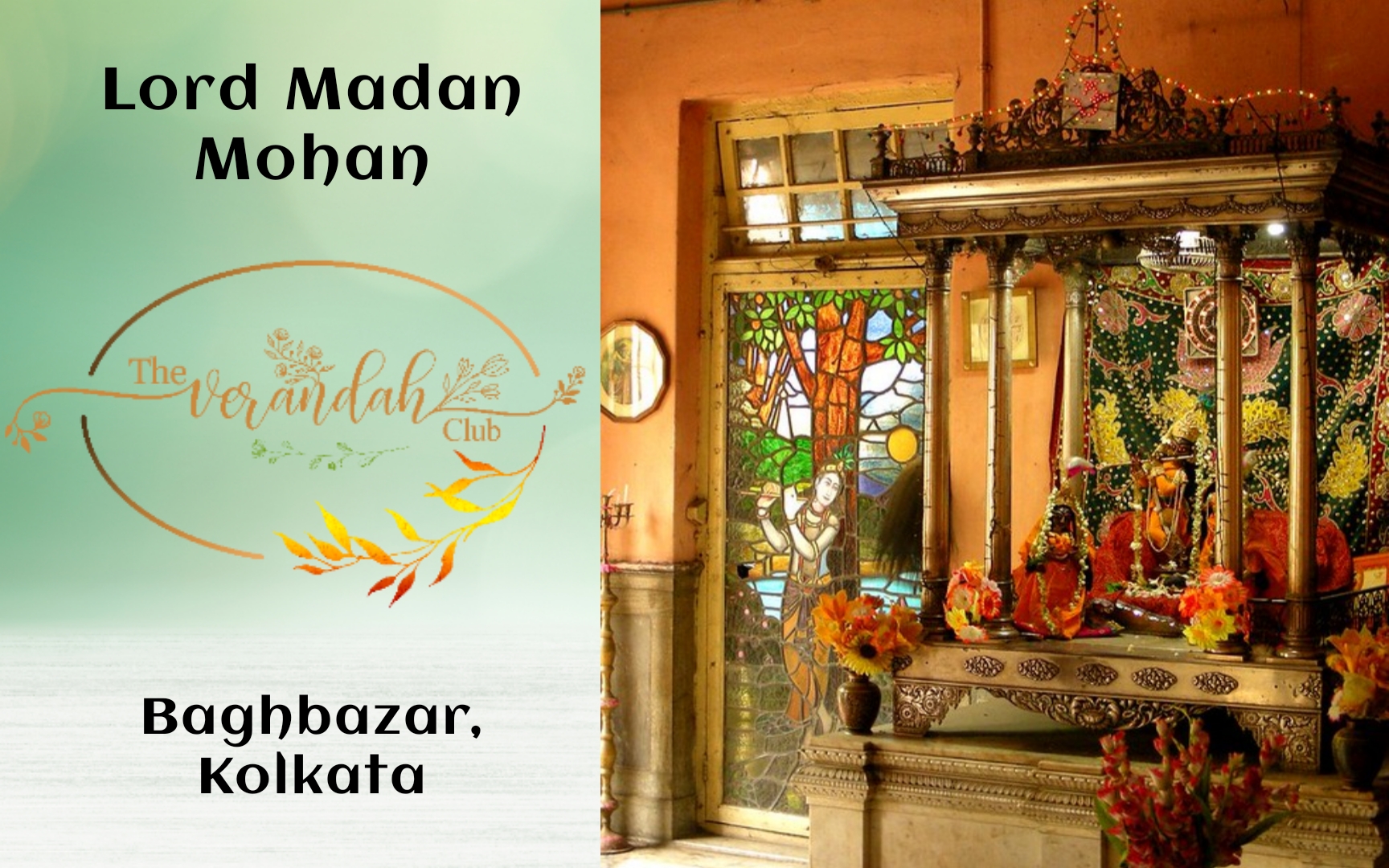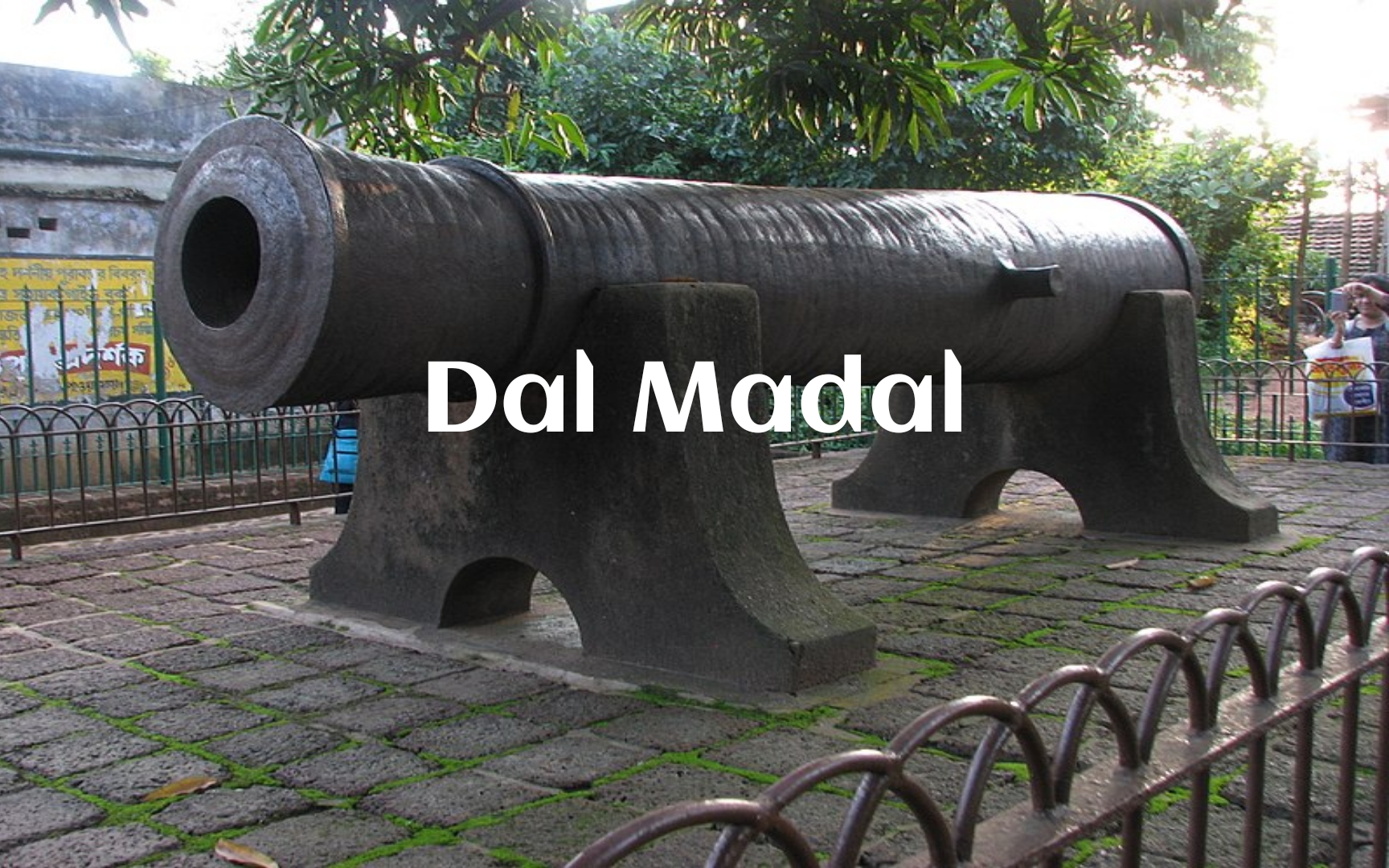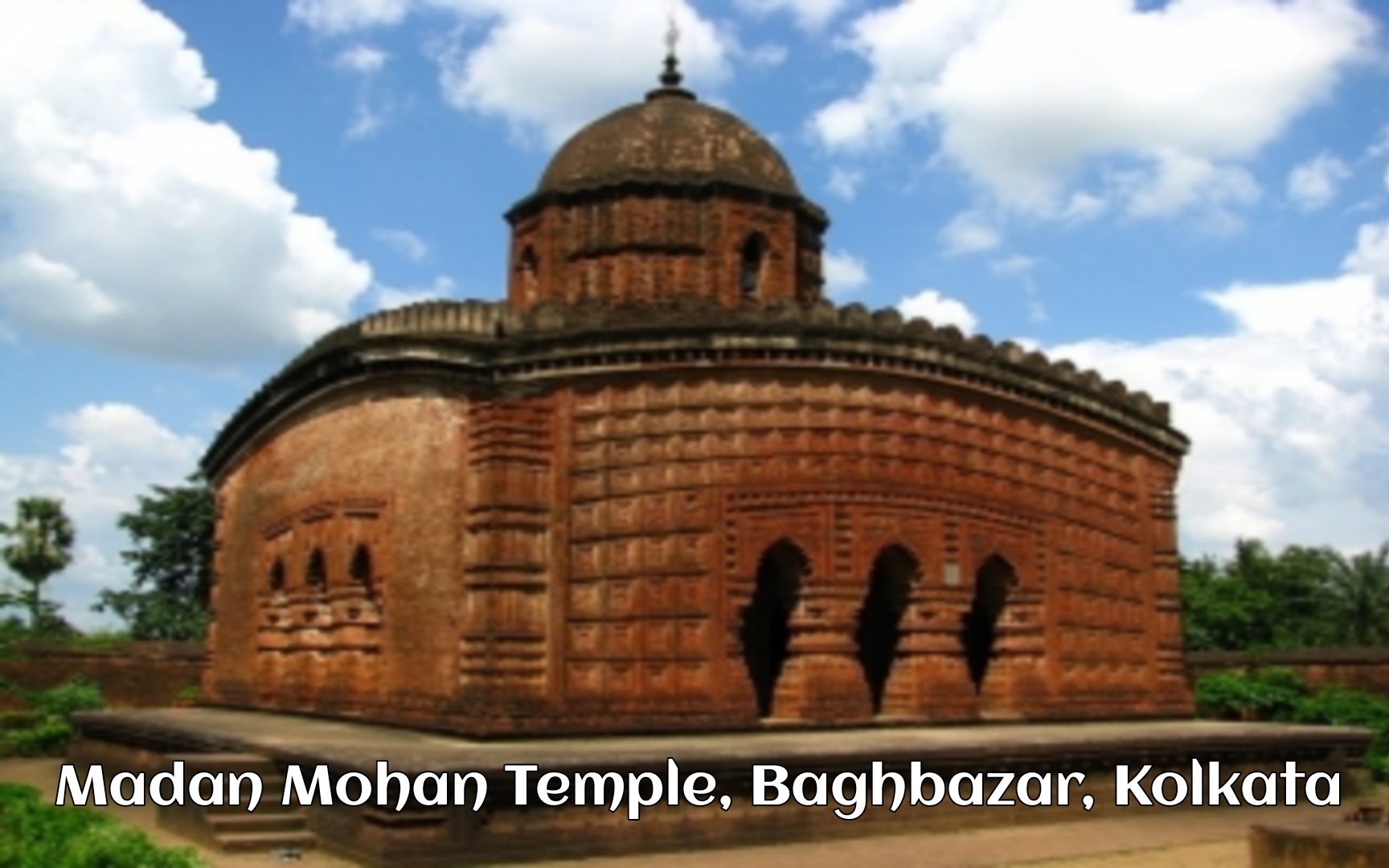On the western fringes of the present day state of West Bengal once stood a legendary kingdom now almost forgotten. Their reign predates the arrival of Islamic forces into the Indian subcontinent and they kept ruling the land till India achieved its independence from Britain. By then, their suzerainty was significantly reduced and the erstwhile kingdom was a mere Zamindary (feudal fiefdom). But today, we look back at the glory days of this forgotten dynasty: The Malla Kings of Bishnupur.
The origins of the dynasty lie shrouded in myth and mystery. The most commonly accepted version narrates that a prince from a royal family of Northern India was making a pilgrimage to the holy town of Puri with his heavily pregnant wife. While passing through the jungles, of the area that is today’s Bankura district (West Bengal), the wife started having labor pains. So consumed was his religious fervor that the prince chose to leave his wife behind and carry forward with this journey. The unfortunate woman gave birth to a baby boy in the jungle but passed away in her labors. The newborn was found by a Bagdi (forest dwelling tribe) woman who was in the jungle collecting firewood. The boy grew up among the Bagdis as a child of the forest. Only mark of his royal lineage was a sword and a scroll containing details of his identity left by his father. One day a Brahmin priest happened to notice him and realized his looks were very different from the forest people. He read the scroll and realized that the boy was of royal descent. He took the young boy to live with him.
When the local king died, the Brahmin was invited to be a part of the Shraddh (funeral rites) ceremony and he took his adopted son with him. At the assembly, a shocking incident took place. The royal elephant picked up the young boy in its trunks. Everyone was petrified thinking the elephant would smash the young boy to smithereens. However, the elephant is said to have calmly proceeded towards the royal throne and deposited the boy there. That is apparently how the Malla dynasty began its journey back in the 7th century with the first king assuming the name, Adi Malla. What started as little more than a forest kingdom would over the coming centuries swell to cover the whole of present day Bankura district as well as parts of Burdwan, Birbhum, West Midnapore & Purulia in West Bengal, as well as large tracts of Santhal Parganas division of Jharkhand.

As the Islamic rule prevailed in Bengal, being far away in the western corner of the province and not possessing the fertile plains of the Gangetic delta, the Malla Kingdom largely spared the attention of the Bengal sultanate. However that changed in the 1570s. Daud Khan, the belligerent son of the Goud Sultan Sulaiman Karrani decided to launch an attack on Malla territory. With a huge army of lakh plus foot soldiers, Daud Khan descended on the unsuspecting kingdom like a menace. When all hope seemed lost, stepped forward the brave prince of the Mallas – Hambir Malla. He rallied the Bishnupur army into a murderous rage invoking the name of the family goddess, Maa Mrinmayee. A fierce battle followed in which the Sultanate army was humiliated by Hambir’s forces. Legend has it that the main battle took place near the Mundmal fort of the Mallas. It is said that by the end of the battle, the fort’s gates were filled with the corpses of the Pathan soldiers. Hambir himself cut off the heads of several enemy soldiers and making a garland with them, he placed them at the feet of Maa Mrinmayee. The arrogant Daud Khan was arrested but Hambir set him free and allowed him to return to Gaud.
The heroics earned Hambir the sobriquet of ‘BIR’ (Brave) with the prince, henceforward was known as Bir Hambir. In time, Bir Hambir ascended the throne of Bishnupur. He proved to be not only a fierce warrior but also a wise statesman. Recognizing the rising power of the Mughals, he entered into an alliance with Jalaluddin Akbar and helped him in defeating the Goud Sultanate. In return, the Malla kingdom was allowed to exist as a Mughal vassal state enjoying near independence for all practical purposes. However, during the rule of Bir Hambir, another tectonic change took place. The Malla kings had been traditional Shaivaites (worshipper of Shiva). Hearing a narration of Bhagavad Gita by the Vaishnava sage, Srinivasa, moved Hambir so much that he became an ardent follower of Vaishnav dharma which was adopted as the royal religion. His ardent devotion to Vaishnavism would soon foment a trouble of different kind.

Once while returning from a pilgrimage, Bir Hambir came across a temple in his territory. The deity of the temple was Lord Madana Mohana (a form of Shri Krishna). The priest of the temple informed Bir Hambir that he was bestowed with the idol by a traveling ascetic who in turn had found the idol in supernatural circumstances, inside the dense forests of the Deccan. The ethereal beauty of the idol entranced Bir Hambir. At night, he stole the idol and rushed back to his royal palace where Madana Mohana was established as the Kula devata (royal deity). The priest when he found the idol missing correctly guessed what had transpired. He journeyed to the capital where he demanded an audience with the king. There, he accused Bir Hambir of stealing his god. When Hambir denied the charge, the priest threatened to immolate himself. Scared of causing a Brahmin’s death, Hambir accepted the theft but refused to give up the idol. The heartbroken priest left but not before uttering the curse which goes, “Oh Lord Madana Mohana! A You quit me in the lure of Mallabhum, likewise some day You will have to leave this holy land.”
Lord Madan Mohan’s blessings though continued on the Malla kings and Bir Hambir’s successors kept ruling the land with all glory even as the Mughal sun declined. However, in 1742, clouds of trouble arrived on the horizon. The Maratha invaders were laying waste to the western tracts of Bengal and that year, a Maratha army under the command of Bhaskar Pandit lay siege to Mallabhum. The ruling king, Gopal Singha had acquired the intense devotion to Madana Mohana from his ancestor, but none of the bravery of the great Hambir. He spent most of his time in religious activities but ignored the defense of the kingdom. The sight of the gigantic Maratha army now broke his nerve. He announced that Mallabhum would surrender itself to the might of the Marathas. The king lay prostrate in front of the deity’s idol when booms of artillery broke his trance. The legend goes that as he rushed to his palace, a strange sight met the king’s eyes. A young boy was operating the famed cannon ‘Dal Madal’, raining fire on the Maratha forces who were cowering in front of the tremendous artillery onslaught. The boy appeared to be having blue skin color and an iridescent light was emanating from him. The king ran back to the temple where it is said that he found a strong smell of gunpowder and black soot marks on the idol’s arms. He started praying fervently to his lord for saving his kingdom.

The reality may have been more mundane. The royal princes were unhappy with the surrender announced by the king and it is likely that it was one of them who had chosen to man the cannons and rain fire on the enemies. His heroic act probably energized the rest of the artillery in joining in the act. The firing of the canons though dispersed the Maratha forces who chose to withdraw than suffer losses. But even to this day, this legendary tale persists in the villages and by-lanes of Bishnupur.
However, the curse of the long dead Brahmin would finally come true. Under the rule of Gopal Singha’s successor, Chaitanya Singha in the last years of the 18th century, the royal family got entangled into a legal mess. The financial condition of the legendary kingdom had started to deteriorate and the king had large debts to his name. For some months, he had to live in a small accommodation in Calcutta. He took the Madana Mohana idol with him there. Thus, the idol was forced to leave Mallabhum as had been predicted by the priest. Worse was to follow. In order to pay off his large debts, Chaitanya Singha was forced to sell off Madana Mohana’s idol to a rich salt merchant of Hooghly. Madana Mohana, finally, and permanently left Mallabhum.

The famed Madana Mohana idol of Mallabhum is now believed to be presiding at the Madana Mohana temple in Baghbazar of Kolkata.
If you can ever make time, visit the quaint little town of Bishnupur in Bankura district of West Bengal and re-live the living history of this place which our history books chose to forget.
NEXT ARTICLE

At the southernmost tip of this mesmerising ensemble lies the majestic Great Nicobar Island, boasting an impressive landmass of about 910 square kilom...

Bharath has always been a land traversed by spiritual masters/ Guru since time immemorial. These spiritual masters have always upheld the core princip...

South India contains its fair share of unique pilgrimage centres. These divine places of worship have a prominent Sthala Purana, devoted followers, di...